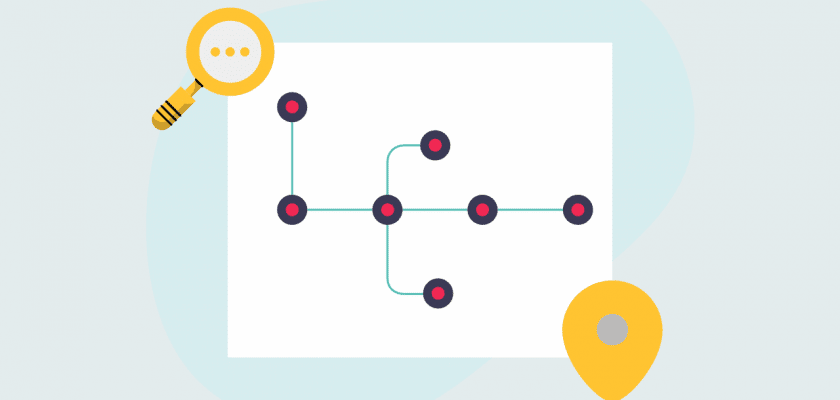What is curriculum mapping?
A curriculum map tells you where you have been and where you still need to go. It keeps a visual record of everything that has been taught, what still needs to be taught and how the content should be assessed. It is an organic document used to plan the year ahead and reflect on to improve going forward. A completed curriculum map is displayed on a chart or table so that it is easy to refer to as needed.

Why is are curriculum maps important?
Curriculum mapping allows all the teachers and administrators responsible for a grade to step back and get a broader picture of what is being taught across curricula. Not only does seeing the bigger picture ensure teachers are more aware of each student’s general school experience, but it can also help rule out unnecessary repetition, allow for collaboration between teachers, and expose gaps or redundancies in the content.
Curriculum mapping helps teachers plan the time they need to cover a subject area, what is necessary for it to be assessed and ensure that everything is covered within the given time. There is a multitude of reasons why curriculum mapping is essential.
Curriculum mapping helps stakeholders embrace the school’s identity
Each school has its own ethos and commits to various initiatives and projects. Whether it is community-based programs, diversity and inclusion or life skills training, it can be included in the curriculum map, worked into modules, courses and units and serves as evidence.
Curriculum mapping requires cooperation and collaboration
Two heads are always better than one. However, many heads make a superpower. Curriculum mapping requires input from all the teachers involved in ensuring all the standards are delivered. As a result, teachers teach when they can look at the big picture and plan topics that build on and bounce off each other. This will naturally result in a more organic and holistic education that is more meaningful than each subject taught in a vacuum.

Curriculum mapping ensures resources are freely available
When the teachers work together and pool their resources, the result is a treasure trove of ideas teaching strategies, resources, assessments, activities and notes regarding student needs and support.
The curriculum map lives on with the school
If all the units are loaded with each teacher named an editor instead of an owner, it will be accessible to everyone. As a result, files cannot be deleted by accident. New teachers can get a clear overview of what is expected, and the content remains available to everyone if a teacher leaves the school
Curriculum mapping uses tools and techniques that everyone is familiar with
All schools use systems they have become comfortable with and tried and tested. When they stick to the same tools and techniques, ongoing training can build on what is known, and there is far more time to spend doing the things that matter. On the other hand, if everyone has their work on a different system, a lot of time is lost with everyone trying to figure it out when they need to access something.
The curriculum map is saved automatically in the cloud
The cloud has revolutionized access to information and the ability to collaborate and share work. Keeping the curriculum in the cloud ensures that everything is saved automatically, is easy to access and will never be lost.
How to Create a Curriculum Map
Many curriculum map examples and curriculum map templates are available to make it easier to start without worrying about formatting and layout. Once you have agreed on one that works for your team, you can begin the process.
Decide on the goals of your program
Before you start your journey, you need to know the destination. If a curriculum team or an accreditation body predetermines these goals, get familiar with them and ensure you understand exactly what they require. If you need to create them yourself, research thoroughly and get support from respected sources. Finally, keep critical thinking, writing skills, Bloom’s taxonomy and enrichment at the front of your mind.

Choose your skills, knowledge and attitudes
Once you know your goals, you must decide how to get there. Select the skills, knowledge or attitudes you intend for your students to achieve and ensure they are aligned with your standards and program goals. Think of it as a road map that leads to the destination. There are various stops along the way to refuel, get supplies and ensure that you are equipped to complete the journey successfully.
Ensure you have the instructional materials and resources that you need
Step back and see what your students need from you to support the journey. Then, decide what can be used to ensure they have access to the content, are empowered to circle back and recap when needed and can access information in various formats according to their learning style and needs. This can include textbooks, general books, videos and webinars, software or web-based resources. Once you have decided on your instructional materials, check they it align with your program goals and the skills, knowledge and attitudes you have developed your course around.
Decide how each course will be informally assessed
Choose or design the activities and assignments that will be completed as the course progresses. The purpose is to assess how well you are sticking to your course. If you plough through without checking if your students are on track or if you are delivering the content in a way that aligns with the goals, the only indication would be a final exam. This would be unfair to the students as they would have no way of checking their progress. It also wouldn’t be fair to you, as you would not pick up any gaps or areas that need a little more consolidation. It will also ensure students can engage in multiple activities that give room for improvement.
Plan your summative assessments
Finally, you must decide how to formally assess your student’s achievements and whether they have met the course objectives. The data collected from these assessments will also assist you when you adapt your curriculum map for the following year. You will be able to identify areas that need improved instructional strategies, better resources and more precise goals.
While these assessments are formal and the stakes are high, they don’t only have to take the format of traditional exams. Not all students present their proper understanding this way, so allow for other opportunities such as essays, research products, case studies and practical exams.
Ideas & Inspiration
Kindergarten Curriculum Map
Heidi Butkus is an experienced educator who has created a number of resources and programs to support teachers on their planning journey. She has created a free kindergarten curriculum map with printable resources and video links.
Easy Steps on Curriculum Mapping
Here is a step-by-step guide with examples from across the curriculum and a link to editable templates.
Pacing Guide
Amy Hoffman is an elementary school teacher who has put together a comprehensive guide to curriculum mapping, with a link to her editable paperless template for Google Drive.
Standards Planning & Learning Outcomes
Traci Clausen has created a resource treasure trove filled with templates, ideas, tips and guides to make curriculum mapping a breeze.
How to Guide for Annual Planning
Jodi Durgin created Clutter-Free Classroom to support busy teachers and cut down on their planning time. Her blog and resource collection have plenty of ideas and templates to help you.
Curriculum Map
Mrs. Wills’ Kindergarten is a site run by Kindergarten specialist Deedee Wills. She created her page to provide Kindergarten teachers with lesson plans, valuable resources and activities to help simplify the planning process, leaving more time and energy for effective teaching.
Video Tutorial
Tessa Maguire has created a website that offers numerous tips, tutorial videos and resources. Her section on curriculum mapping will show you how to use Excel to create a simple, easy-to-access map.
Curriculum Mapping Tips
Tip 1: Plan and be prepared
So many variables come into play, making each year different from the last. Build on your previous map, and adapt to what needs improvement. Also, consider what is unique to the year ahead. You must know your student’s abilities, skills, and where they fare in terms of what is expected for the grade level. It’s challenging to do this when you are planning ahead and don’t even know your students yet – this is why collaboration is so important. Spend time with the teachers who taught the students preciously to gain insight into anything that can affect your goals and expectations.
It’s also necessary to communicate with the principal and administration about any academic gaps or aspects they hope to focus on and where they feel there needs to be an improvement.
You need to set academic expectations at a pace that will set the tone for the year. Aim high – you can constantly adjust it as you go, but if you start off too slowly, it will become the status quo.

Tip 2: Consider your student’s needs when you set your standards
Learn as much as possible about the students coming your way on an individual level. For example, determine what special needs need to be catered for, which students need particular differentiation and which students have emotional or behavioral challenges you need to anticipate. Consider these factors when designing your curriculum map and setting your goals.
Tip 3: Assess regularly
You must assess your students regularly to ensure you stay on top of their progress. The key is ensuring that informal assessment often happens subtly, without the students even knowing they are being assessed (at least some of the time.) Your summative assessments need to be meaningful and offer a true reflection of the student’s capabilities. Spread your assessments out and try various methods to create a clear picture of student learning outcomes and individual progress. Offer regular feedback to your students, and if you have concerns, keep the parents in the loop too.
Tip 4: Be flexible – nothing is cast in stone
Be open to change. Very often, your plans can be planned to the letter, but when it’s put into practice, you realize that some things just don’t work. It happens to the best of us, but how we handle it is what sets us apart. So communicate, reevaluate and always be open to redirecting and changing course. You can still reach your destination if you take a detour.
Every teacher knows that planning is at the root of every successful academic year. It is easy to veer off course when the days blur by and you are overwhelmed with all the unexpected things that inevitably creep up. However, with a solid curriculum map, you can backtrack to where you should be and find your way back along the path.
What is the purpose of a curriculum map?
Curriculum mapping helps teachers see across grade levels, so they know what to expect from the students coming to them and to ensure they are in the right place for the next grade. It also helps teachers collaborate and streamline their content when there is a crossover between multiple subject areas. This way, it can be done in a meaningful way where the different teachers can support each other and avoid repetition and redundancy.
Curriculum Mapping FAQs
Keeping your eye on the goal
Every teacher understands that meticulous planning forms the foundation of a successful academic year. In the whirlwind of fast-paced days and unexpected developments, it’s all too easy to deviate from the intended course. However, having a reliable tool at your disposal allows you to retrace your steps and find your way back to the planned curriculum path – this is the power of curriculum mapping.
